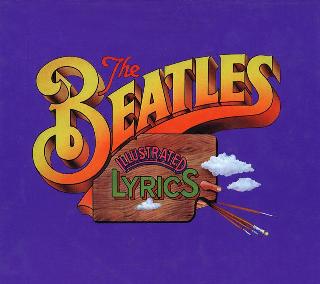Index
Home
Vorige
The Continuing Story of Bungalow Bill
Composer(s) : Lennon and McCartney
Year : 1968
Chords/Tabs: The Continuing Story of Bungalow Bill
Notes on "The Continuing Story of Bungalow Bill" (TCSOBB)
KEY C Major (with assists from A Major and a minor)
METER 2/4
------ 3x ------
FORM Refrain -> Verse -> Refrain -> Refrain -> Outro (ending cut off)
GENERAL POINTS OF INTEREST
Style and Form
- We have here an example of the folk ballad, form notable in for
the way in which the refrain is used as an intro, and is repeated
several times ("Sing it, one more time, everybody!") at the end,
conjuring the atmosphere of a live, rather than studio, performance.
Melody and Harmony
- The key scheme is one much favored by the Beatles, using a three-key
gambit, where both relative and parallel minor relationships are
appear. I grant the honors of home key to C Major even though it shares
the refrain with the key of A Major. The use of a minor for the verse
provides the tonal linch pin, since it is the relative minor of C and
parallel minor of A. This complexity of key scheme is in contrast
to the happy simplicity evident on the song's surface.
- The C/A tonality of the refrain forces its tune to be chromatically
difficult to sing in absence of the chords that underly it; try it,
you'll see. The verse tune, by contrast, is in John's much-favored
pentatonic style.
Arrangement
- Both texture and tempo are used to articulate the form. The slower
tempo for the verses is manifest, and I leave the tracing of textural
details as an exercise for the reader.
- The refrain includes a level of participation by so-called friends
and family that you don't need Lewisohn's help to notice is there.
Alright, I'll admit, back when the album was released, we didn't
suspect necessarily that Yoko was "mommy" in the last verse. But
still, you should contemplate why this sort of gesture seems so
"right" in the White Album context, whereas you would have found
it unfathomable if not unacceptable back on anything prior to
"All You Need Is Love."
- The lead vocal is fastidiously sculpted into an interesting
single/double track mixture for the verses.
- The backing ensemble is predominated by acoustic guitar, drum
kit without cymbals, bass guitar,tambourine, and in the verses,
some kind of tremelo guitar strumming.
- And then, of course, we have a bassoon, of all things, showing
up for the outro. Following all due protocal, it joins the ensemble
several iterations before it needs to appear solo.
SECTION-BY-SECTION WALKTHROUGH
Refrain
- The refrain is an unusual 11 measures long, with a poetic form
of ABA'B', the result of an interesting foreshortening of the second
phrase. Note, how the Esher demo for this song (vinyl "LLT, volume 9"
and other popular bootlegs) features an even more radical shortening of
the phrase! The latter, BTW, is a marvelous "Beethoven Sketch Books"
level example of how a composer revises his early drafts.
|C |G |C |f |
C: I V I iv
|C |f |G |
I iv V
A: flat VII
|A |E |A |d |
A: I V I iv
|A |d |E |- |
I iv V
- I've gone to the trouble of analyzing the shift to A Major as a
pivot modulation, though you may be convinced by your own experience
that it is more likely borne more of the "abrupt key change" aesthetic.
- The minor IV chord in a Major key is a 50s R'n'R cliche much favored
by John. Here, its appearance is both dramatically sad while, in
the third phrase it nicely facilitates the shift to the minor mode.
Verse
- The verse is in a slower tempo than the refrain and is a blues-like
12 measures long, with an AAB poetic form. The ad-lib halt at the end
of the final phrase makes it difficult to sense where the downbeat is
when the remainder of the last measure is performed "A Tempo" to
announce the refrain that follows it.
-------------- 2X ---------------
|a |C |F |- G |
a: i VI VI flat-VII
|E |G |a |f |
V flat-VII i
C: vi iv
- The G#/G natural shift between the chords in the first two measures
of the final phrase provide a typical Beatles cross-relation. The Esher
demo *definitely* uses an A Major chord in the third measure of that
phrase, providing an additional cross-relation between C# and C natural
in the following measure, though for the official version, I believe
that John opts for an a minor rather than A Major chord in the
next to last measure.
Outro
- The outro features approximately 4.8 iterations of the refrain before
the track is rudely interrupted by the "hey-ulp!!!" lead-in to
"While My Guitar Gently Weeps."
- Those many repeats of the outro feature an incremental thinning out of
the backing track; Haydn had pulled the same trick in his "Farewell
Symphony," #45 :-)
- The bassoon, which is given the honor of ushering out the song, already
appears in the ensemble at the start of the second repeat; a demonstration
of a basic compositional/constructional principle, comparable to the way
the that successive rows of brick are laid on the overlap.
SOME FINAL THOUGHTS
- You find John playing tigers here with as much energy and effort as
Paul ever expends on the game. And yet, there is something knowingly
adult and ambiguous in John's verbal pirouettes and understated social
comments that elevates his finished product well above mere child's play.
Regards,
Alan (awp@world.std.com)
---
"Oh, that this too, too solid flesh would melt. Zap!" 081797#135
---
Copyright (c) 1995 by Alan W. Pollack
All Rights Reserved
This article may be reproduced, retransmitted, redistributed and
otherwise propagated at will, provided that this notice remains
intact and in place.
Ook op The Beatles [White Album]:
(c) 2024 Serge Girard


 (c) Alan Aldrigde, The Beatles Illustrated Lyrics
(c) Alan Aldrigde, The Beatles Illustrated Lyrics